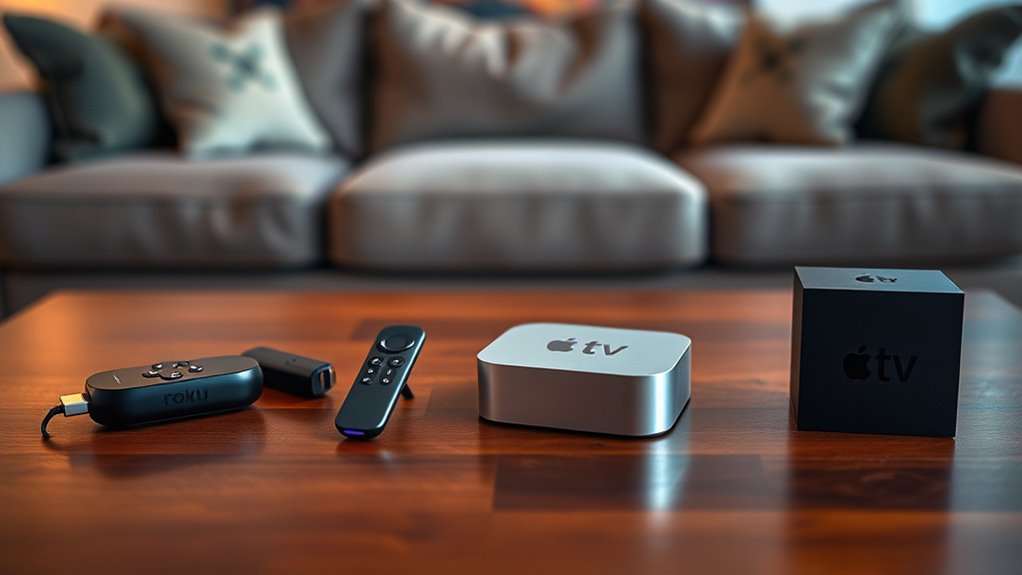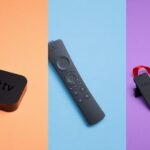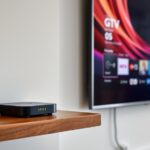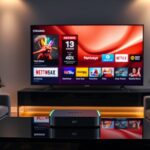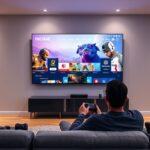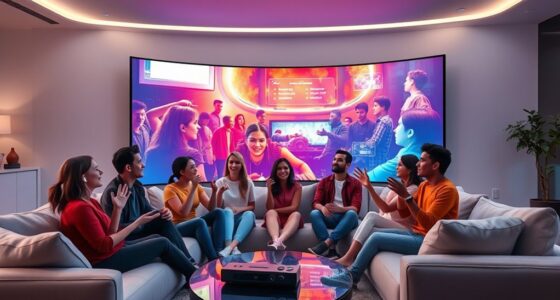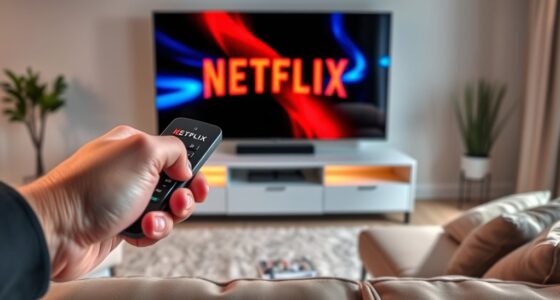Choosing the right streaming device depends on your budget, content preferences, and device ecosystem. If you want a simple and affordable option, Roku offers broad app support and easy navigation. For seamless integration with Amazon services and smart home features, Fire TV is a great choice. If you’re into Apple’s ecosystem, Apple TV provides high-quality streaming and exclusives. Android TV offers customizable experiences for various budgets. To find the best fit, consider your priorities—more details await if you explore further.
Key Takeaways
- Consider your ecosystem: Apple users benefit from Apple TV, while Google or Amazon users prefer Android TV or Fire TV.
- Budget and performance needs: Roku and Fire TV are budget-friendly options; Apple TV offers premium features, and Android TV provides customization.
- Content compatibility: Ensure the device supports your favorite streaming apps and services for seamless access.
- Smart home integration: Choose devices like Fire TV or Android TV for better compatibility with smart home devices and voice assistants.
- User interface and ease of use: Roku and Apple TV offer intuitive interfaces, while Fire TV and Android TV provide more customization options.

With so many streaming devices available, selecting the right one can feel overwhelming. You want a device that fits your entertainment needs, budget, and tech preferences, but the options—Roku, Fire TV, Apple TV, and Android TV—each come with their own strengths and quirks. To make an informed decision, consider what matters most to you: ease of use, content selection, integration with other devices, or specific features.
Roku is often praised for its simplicity and wide app compatibility. If you prefer a straightforward interface and access to a broad range of streaming services without much fuss, Roku is a solid choice. It offers various models at different price points, so you can find one that fits your budget. Roku’s remote controls are usually intuitive, and the device supports voice commands through integrations like Alexa and Google Assistant. If you’re looking for a user-friendly experience that gets straight to streaming, Roku’s a reliable pick.
Roku offers simple, user-friendly streaming with broad app support and intuitive remote controls.
Fire TV, from Amazon, is ideal if you’re already embedded in the Amazon ecosystem. Its integration with Alexa allows you to control your smart home devices, search for content using voice, and even order products directly through Amazon. Fire TV devices often come with a slightly more robust hardware setup, meaning faster navigation and better graphics at comparable prices. If you enjoy Amazon Prime Video or want seamless voice control and smart home integration, Fire TV can enhance your overall experience.
Apple TV is perfect if you’re invested in the Apple ecosystem. It offers smooth performance, a sleek interface, and tight integration with your iPhone, iPad, and Mac. If you’re looking for high-quality 4K streaming, access to Apple’s exclusive content, and a polished user interface, Apple TV stands out. However, it tends to be pricier than other options, so it’s best suited for those who value premium build quality and are already using Apple devices.
Android TV provides flexibility and customization. If you prefer a more open platform where you can install apps beyond the Google Play Store, Android TV gives you that freedom. It supports a wide array of devices, from budget options to high-end models, and integrates well with Google services, Chromecast, and smart home devices. If you’re tech-savvy or want a device that can adapt to your preferences, Android TV could be your best bet.
Additionally, content discovery features can significantly influence your viewing experience, making it easier to find shows and movies you love. Ultimately, your choice depends on your existing devices, budget, and how much you prioritize ease of use versus customization. Each platform offers unique benefits, so think about what aligns best with your entertainment style to make the right pick.
Frequently Asked Questions
Which Streaming Device Offers the Best 4K HDR Support?
You want the best 4K HDR support, and many devices deliver impressive quality. The Apple TV 4K often leads with its superior HDR performance, supporting Dolby Vision and HDR10. Roku Ultra and Amazon Fire TV Stick 4K also offer excellent 4K HDR quality, with support for Dolby Vision and HDR10+. Android TV devices vary, but high-end models provide comparable 4K HDR support. Choose based on your ecosystem and additional features.
Can These Devices Be Used Internationally?
You can use these streaming devices internationally, but some may have limitations. Roku and Fire Stick often work with VPNs to access content abroad, but their features differ by country. Apple TV and Android TV generally support global usage but might require regional app stores or subscriptions. Check compatibility and regional restrictions before traveling or moving abroad to guarantee smooth streaming experiences.
Do All Devices Support Voice Control Features?
Imagine you’re relaxing at home, wanting to control your streaming device effortlessly. Not all devices support voice control. For example, Fire Stick and Apple TV have built-in voice assistants like Alexa and Siri, making commands easy. Roku and Android TV may require separate remotes or apps for voice functions. So, if voice control is essential, choose devices with integrated voice assistants to enhance your viewing experience.
Which Device Has the Most User-Friendly Interface?
You want a device with an intuitive, easy-to-navigate interface. Roku stands out for its simple layout and straightforward menus, making it easy to find what you want quickly. Fire Stick also offers a user-friendly experience with its familiar Amazon ecosystem. Apple TV provides a sleek, polished interface, but it might take some getting used to if you’re new to Apple’s design. Android TV is versatile but can sometimes feel cluttered.
Are There Any Significant Privacy Concerns With These Devices?
You wonder if these devices have privacy issues, and the answer is yes, to some extent. They collect data on your viewing habits, track your preferences, and sometimes share information with third parties. You need to be aware of privacy policies, adjust settings to limit data sharing, and stay informed about device updates. Protecting your privacy requires vigilance, because these devices are designed to gather data to improve services and target ads.
Conclusion
Ultimately, selecting the right streaming device depends on your preferences and ecosystem. While many believe that Apple TV offers the best quality, recent tests suggest Fire Stick’s affordability doesn’t compromise performance. Notably, some experts argue Android TV’s flexibility makes it the smartest choice. So, trust your needs, but remember—sometimes, the device you think is best might surprise you with its true capabilities. Choose wisely, and enjoy seamless streaming tailored to you.
